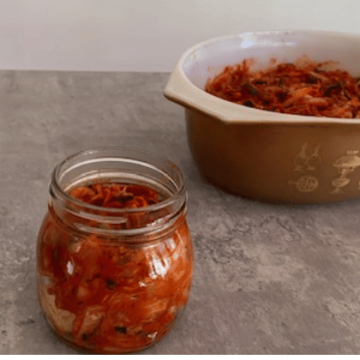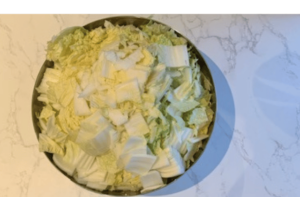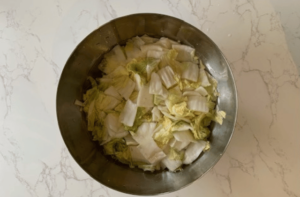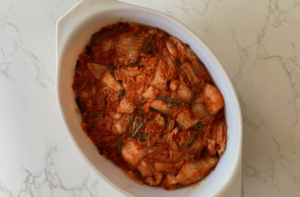How to Make Kimchi(白菜のキムチ)

Easy Homemade Kimchi Recipe
Today, I’m sharing my version of Napa Kimchi!
When I lived in Japan, kimchi was something I always bought from the store—or I’d use Kimchi no Moto, a convenient sauce you simply pour over napa cabbage pickles, and voilà—it becomes kimchi.
But after moving to Australia, I started making a lot more food from scratch. Some ingredients just aren’t accessible or they’re too expensive, so I’ve learned to pivot and adapt.
For the longest time, I thought making kimchi was too difficult—until a friend showed me how easy it actually is. Since then, I’ve never gone back to store-bought! And whenever I make a batch, I always share it with friends—that’s one of the true joys of cooking. 💛
Once your kimchi is made, store it in a clean, airtight glass jar. Let it ferment at room temperature for a day or two, depending on the temperature of your kitchen, then move it to the fridge. It will continue to ferment slowly and develop deeper flavors over time. Kimchi can last for several weeks—or even months—if properly stored, and it just gets better as it ages.
Kimchi isn’t just delicious, it’s also packed with health benefits. It’s full of gut-friendly bacteria and makes any meal extra special.
🌿 A Little History
Kimchi has a long and rich history in Korean cuisine, dating back over 3,000 years. Originally, it was a simple salted and fermented vegetable dish, but over time it evolved with the introduction of chili peppers in the 16th century. Today, there are hundreds of regional and seasonal variations, and it’s considered a staple in Korean households.
Traditionally, napa cabbage is cut into quarters and fermented whole, only sliced into bite-sized pieces when it’s time to eat. But I like to cut it into smaller pieces right from the beginning—it makes the mixing easier and the kimchi more manageable to store and share.
Wondering how to enjoy your fresh kimchi? My Bibimbap recipe is the ultimate match – hearty, satisfying, and packed with umami!

How to Make Kimchi (Napa Cabbage Kimchi) 白菜のキムチ
Ingredients
- 1 Wombat cabbage about 2 kg
- 60 grams Salt 3 % of weight of cabbage
- 1 carrot julienned
- 7 cm white radish julienned
- 1 tbsp glutinous rice flour
- 100 ml water
- 1 tbsp honey or sugar
- 2 cloves garlic you can add more if you like more garlicy
- 1 thumb-size piece of ginger
- 50 ml fish sauce
- 3 tbsp salted fermented shrimp
- 80 grams Korean chili flakes (gochugaru)
- 1/2 onion
- 1/4 apple pear/persimmon works too
Instructions
Salt the Cabbage
- Place chopped cabbage in a large bowl and sprinkle with salt. Toss to combine and let it sit for overnight. Place a plate and put weight.

- Cabbage will soften and release water. Rinse well and squeeze out the excess liquid.

Make the Rice Paste
- In a small pot, whisk rice flour and water. Cook over medium heat, stirring constantly until it thickens. Remove from heat and let it cool completely.
Prepare the Kimchi Paste
- In a blender or food processor, combine garlic, ginger, onion, apple fish sauce, and shrimp. Add the cooled rice paste and mix together.

Mix It All Together
- In a large bowl, combine cabbage, carrot, daikon, spring onion and garlic chives. Add the kimchi paste and mix thoroughly (wear gloves!). Make sure everything is evenly coated.

Ferment
- Transfer to a clean container, pressing down to remove air pockets. Leave it at room temperature for 1–2 days to start fermenting, then move to the fridge. It gets more flavorful over time—start tasting after day 2!

